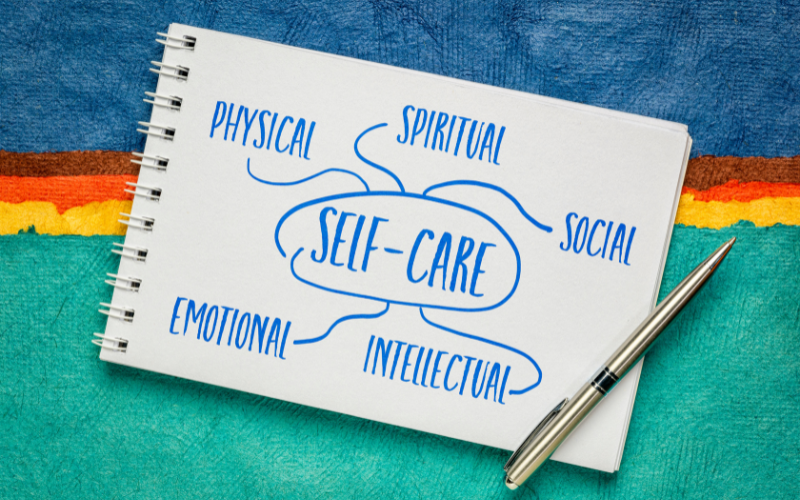Maintaining a healthy well-being for educators

According to a Gallup poll conducted in June 2022, the teacher burnout rate has increased to 44%, doubling since March 2020 (Camera, 2022). The three million member National Education Association released a poll in February indicating that 55% of teachers were ready to leave the profession (Lurye, 2022). Education Secretary Miguel Cardona has stated, “As we support the whole child, we must also support the whole educator” (Camera, 2022, para.9).
One way to support the “whole teacher” is to ensure teachers maintain consistent self-care practices. According to Waterford.org (2023), simple ways to incorporate self-care into our daily schedules include:
- Take short walks outside to clear our heads.
- Connect with our loved ones.
- Try a new hobby or picking up an old one.
- Take time to recognize our emotions throughout the day intentionally.
A more comprehensive list of self-care routines and practices can be found on their Be Kind to Yourself Bingo.
Practicing self-care can be done in the classroom, too. Modeling these practices with students encourages them to incorporate certain behaviors to regulate their emotions and well-being. In the classroom, teachers can model strategies such as:
- Journaling feelings and emotions as we recognize them;
- Practicing mindfulness. The 51 Mindfulness Activities for Students provides multiple ways to incorporate these into the classroom; and
Creating self-care goals and a plan to achieve these goals. More information on how to do this can be found here in the goal-setting worksheet.
Creating an individualized plan with personalized activities and keeping it visible helps with committing to self-care strategies. Suggestions for activities that could be included can be found here. In this article, ideas for self-care in multiple areas (e.g., healthy eating, physical fitness, time management, relaxation, avoiding compassion fatigue) can be included. If teachers decide to create a plan, it’s important to remember that new routines must be repeated consistently to become part of their routine. Additionally, it is helpful to identify any barriers to implementation that can be foreseen. Monitoring progress and having a colleague check in periodically to ask how the plan is working are additional ways to fulfill the self-care activities intentionally.
While self-care strategies are helpful in reducing the stress and burnout that many teachers are facing in today’s classrooms, it should be noted that self-care in and of itself is not going to resolve the bigger issues. According to an article by Klein (2022), systemic changes also need to occur, such as smaller class sizes, reducing the expectations placed on teachers, hiring more paraprofessionals to assist in the classroom, and hiring social workers/school counselors that are more skilled in handling the mental health issues students are facing. Until the more significant factors are resolved, participating in self-care practices can help teachers reduce stress and fatigue.
References
Camera, L. (2022). Educators report highest level of burnout among all other industries. U.S. News and World Report. https://www.usnews.com/news/education-news/articles/2022-06-13/educators-report-highest-level-of-burnout-among-all-other-industries
Klein, A. (2022, June 9). Superficial self-care? Stressed-out teachers say no thanks. Education Week. https://www.edweek.org/teaching-learning/superficial-self-care-stressed-out-teachers-say-no-thanks/2022/03
Lurye, S. (2022). Half of teachers say they’re thinking about quitting, but will they? U.S. News and World Report. https://www.usnews.com/news/national-news/articles/2022-02-02/half-of-teachers-say-theyre-thinking-about-quitting-but-will-they
What is teacher self-care, and how to practice it? (2023, November 10). Waterford.org. Retrieved on February 19, 2024, from https://www.waterford.org/education/teacher-self-care-activities/
For more information, contact Kelley Neubert (harriskc@vcu.edu), Program Specialist, T/TAC at VCU.
Categories Behavior, Inclusive Practices